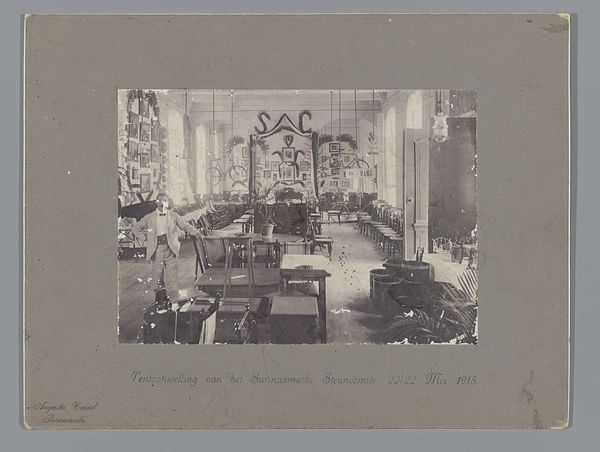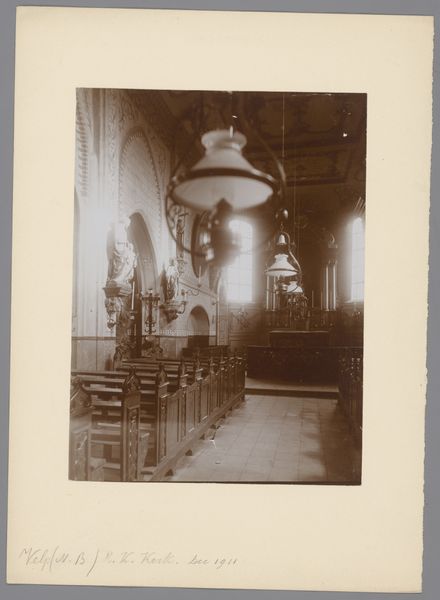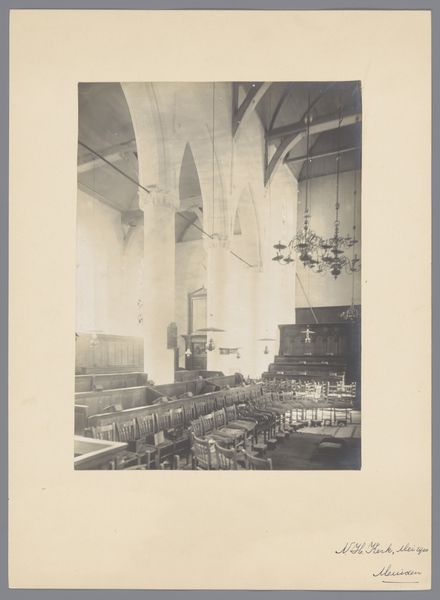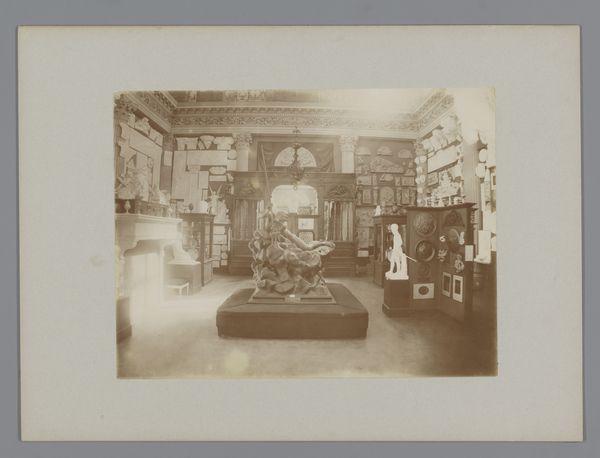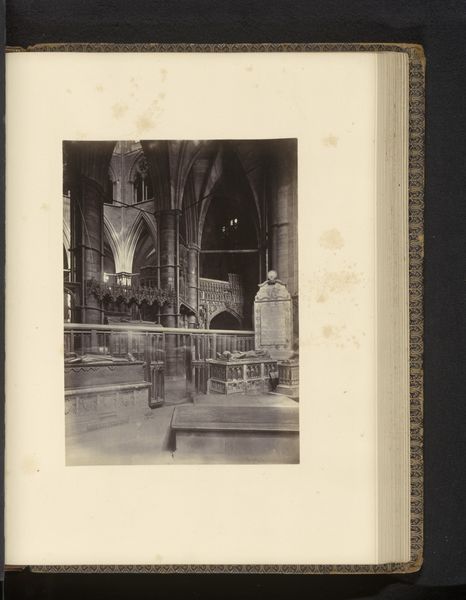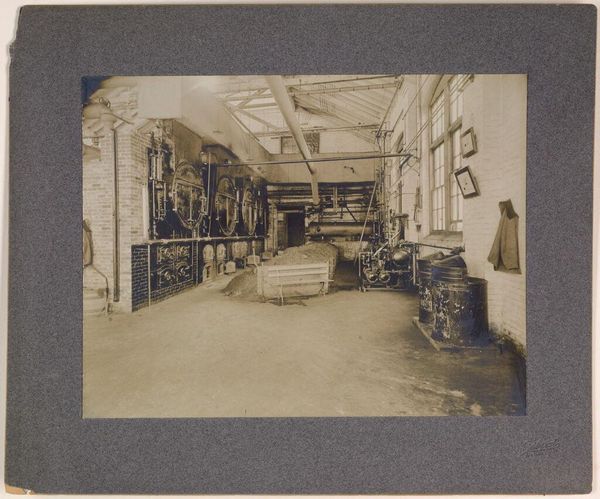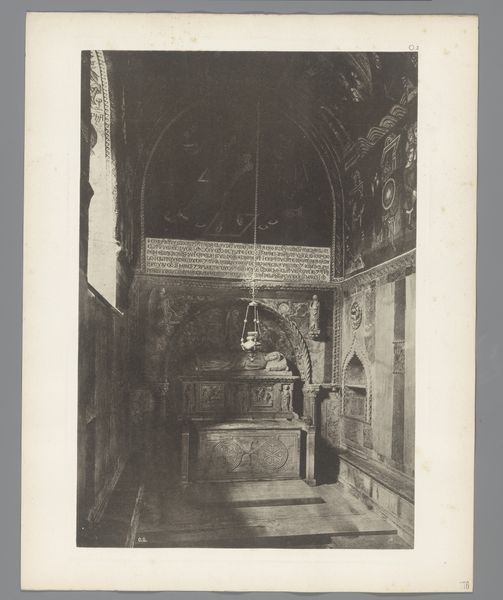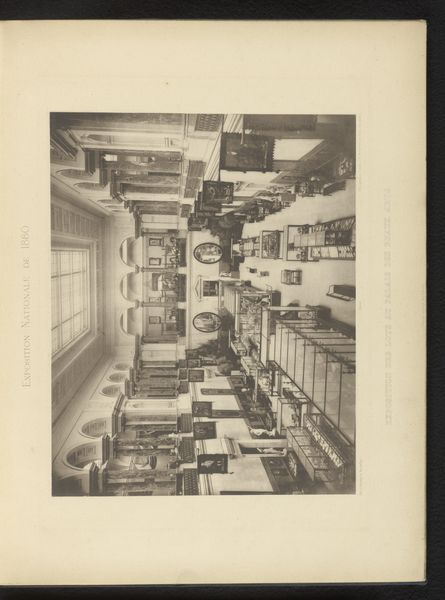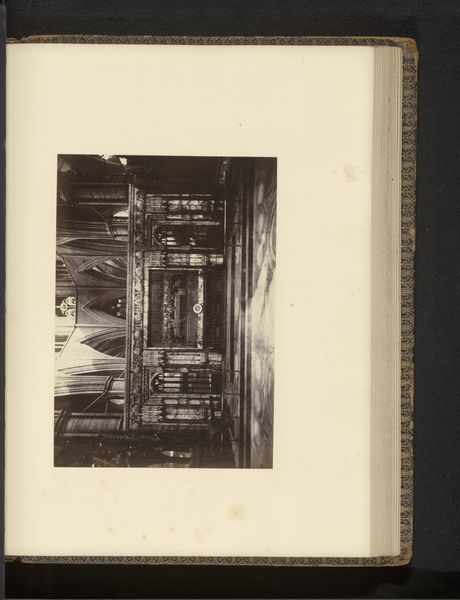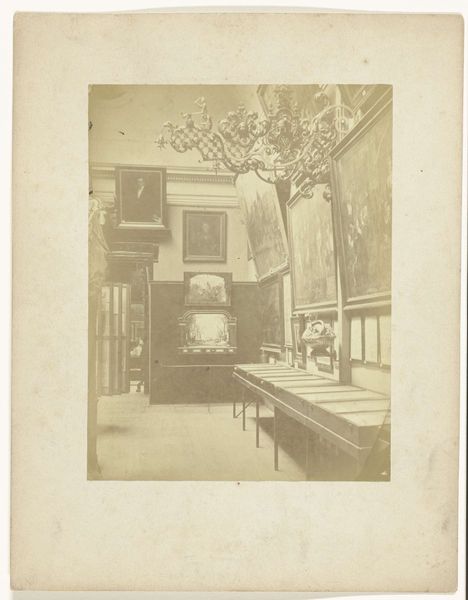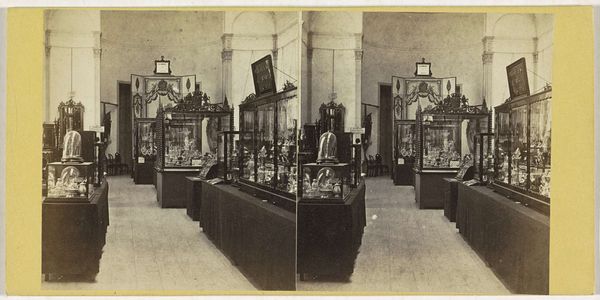
photography, gelatin-silver-print
#
asian-art
#
photography
#
coloured pencil
#
gelatin-silver-print
#
realism
Dimensions: height 100 mm, width 74 mm, height 363 mm, width 268 mm
Copyright: Rijks Museum: Open Domain
Editor: This gelatin silver print from 1908, titled "Temple of the 300 Buddha's Canton," is by Geldolph Adriaan Kessler. The repeated forms of the Buddha figures really strike me; they almost look mass-produced, but also each carefully crafted. What can you tell me about this photograph? Curator: Focusing on the photograph itself, we see a stark contrast between what’s depicted and the means of its production. Here, a seemingly spiritual and artisanally focused setting – the temple with numerous Buddha statues – is captured through a technological medium rooted in industrial processes. Editor: So the photography becomes its own means of cultural exchange and commentary? Curator: Precisely. Kessler, likely as an outsider, uses this relatively new photographic technology to document and, in a way, 'consume' this space. Consider the labor involved in creating the gelatin silver print itself, the factory production of the materials, versus the presumed handcrafted nature of the temple and its contents. Editor: That's a perspective I hadn't considered. Does this say anything about how Westerners may have viewed Eastern cultures at that time? Curator: I think so. The act of photographing turns a sacred, actively used site into a consumable image. Kessler is extracting visual data, and replicating it for personal or wider dissemination, echoing colonial dynamics where cultures and resources were extracted. How do the tables and displays contribute to that dynamic? Editor: I see what you mean; they feel like museum display cases that distance us from the subject. Now I’m also wondering about the choice of black and white – a limitation of the medium or a conscious artistic decision? Curator: An excellent question! Considering color photography was still emerging, we can reflect on whether that absence heightens the sense of ‘otherness’ or provides some claim to "objective" documentation for audiences back home. Editor: This has really changed how I view this photograph! The contrast between the modern technology and the traditional subject matter makes it much more compelling. Curator: Indeed. By examining the material aspects and context of its creation, the photograph offers insights beyond the surface representation of the temple.
Comments
No comments
Be the first to comment and join the conversation on the ultimate creative platform.
